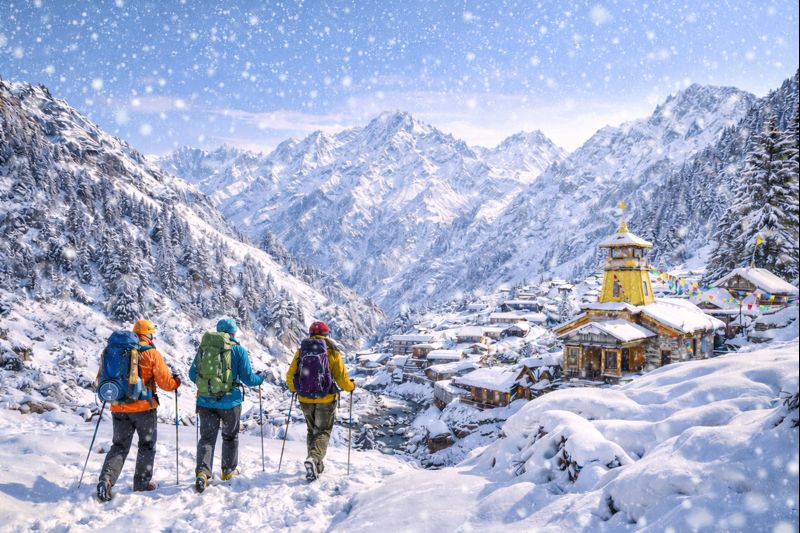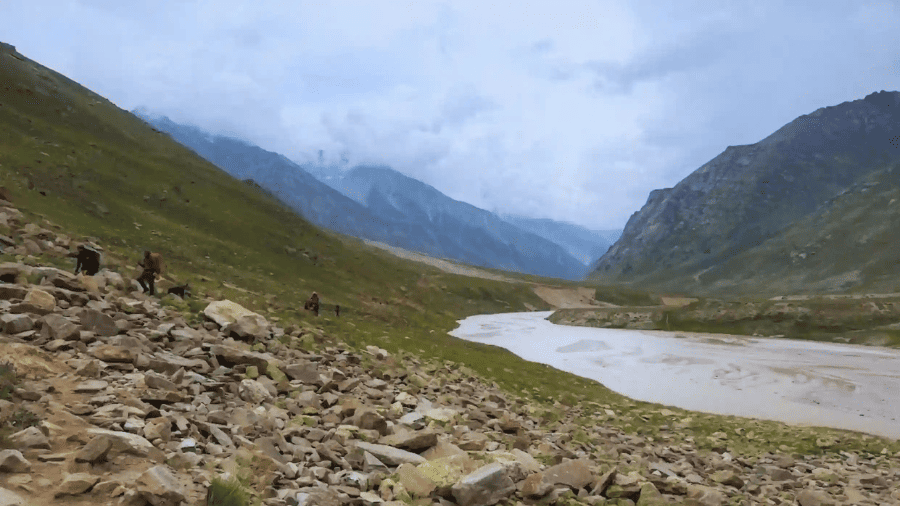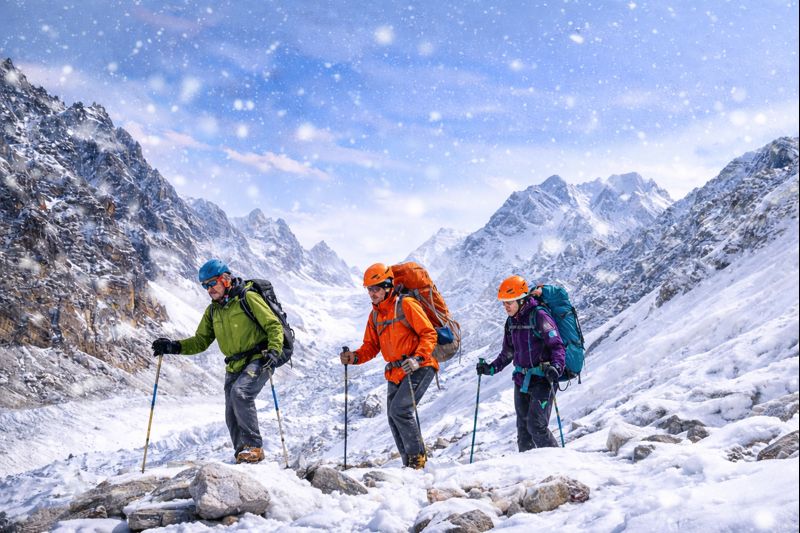
Acute Mountain Sickness : Causes, Symptoms, and Treatments
Acute Mountain Sickness (AMS), sometimes known by its acronym AMS, is a physiological reaction that happens when people climb to high elevations too quickly, forcing their bodies to adjust to lower oxygen levels. For people who travel through mountainous areas, having a solid understanding of AMS is essential since it gives them the information they need to keep themselves safe and healthy when traveling at high altitudes.

Causes of Acute Mountain Sickness:
A variety of variables intimately connected to variations in oxygen availability and altitude-related factors may contribute to the development of AMS. Rapid ascent exposes the body to thinner air and lower atmospheric pressure, reducing oxygen saturation and possibly causing hypoxia to develop.
- Factors Related to Altitude: As you go to higher elevations, the amount of oxygen in the air will gradually decrease. The atmosphere’s pressure and oxygen content decrease as one ascends, reducing the amount of oxygen accessible for the body’s processes.
- Changes in Oxygen Levels and Pressure: Hypoxia may result from low oxygen levels at high elevations. Due to the lower air pressure, the body’s tissues and organs get insufficient oxygen, which affects several physiological processes.
Acute Mountain Sickness Symptoms:
A continuum of symptoms, including early warning indications, mild symptoms, and moderate to severe presentations, characterize AMS. Mild headaches, exhaustion, lightheadedness, and trouble sleeping are examples of early warning signs. People may have increasingly severe symptoms, including nausea, vomiting, and shortness of breath as AMS worsens.
- Early Symptoms and Signs: Initial symptoms of AMS may include a mild headache and lethargy. These symptoms may be accompanied by dizziness and disturbed sleep patterns, causing discomfort that makes people aware of the effects of the altitude on their bodies.
- Moderate to Severe Symptoms: As AMS worsens, moderate to severe symptoms may appear. These must be treated very once. People may have worsening nausea and vomiting as well as rising breathlessness. Confusion may develop in extreme situations, emphasizing the need for action.
Risk Factors and Vulnerable Populations:
Age, gender, pre-existing medical issues, and the velocity of the climb without acclimatization are some characteristics that affect AMS risk.
- Age and Gender: Both gender and age affect AMS susceptibility, with older people and men perhaps being at higher risk.
- Earlier Medical Conditions: Pre-existing medical disorders, especially those that impair the cardiovascular and pulmonary systems, put people at higher risk of developing AMS.
- Lack of acclimatization and a rapid ascent: The chance of experiencing AMS symptoms might increase if one ascends to high elevations too rapidly without giving the body time to acclimate.
Prevention of Acute Mountain Sickness:
A comprehensive strategy is required to reduce the risk of AMS, including moderate climbing, acclimatization, hydration, diet, abstinence from alcohol and sedatives, and, if necessary, medication.
- Acclimatization and gradual ascent: The key to lowering the risk of AMS is to ascend gently and give the body time to adapt to changing altitudes.
- Proper nutrition and hydration: The body’s physiological adaptations to high elevations are supported by drinking enough water and eating a healthy diet.
- Avoiding sedatives and alcohol: Avoiding substances like alcohol and sedatives is crucial since they might make AMS symptoms worse.
Medications and Mountain Sickness Treatment Options:
To maintain safety, prompt care is necessary when AMS symptoms become troublesome.
- Descending to Lower Altitudes: Accessing increased oxygen concentrations when descending to lower altitudes may benefit those with AMS symptoms.
- Supplemental oxygen: By ensuring enough oxygen intake, supplemental oxygen temporarily reduces symptoms.
- Drugs for Symptom Relief: Drugs like acetazolamide may help with symptom management and acclimation.
- Professional Medical Care: To guarantee the correct treatment of AMS in extreme situations, it is essential to seek professional medical care.
Preparing for High-Altitude Travel:
Planning high-altitude travel requires preparation, which includes physical fitness, the right equipment, and medical advice.
- Physical fitness and conditioning: Physical fitness helps the body adjust to conditions with low oxygen levels.
- Packing the Right Gear: Being prepared for variable alpine conditions means packing warm clothes and hydration supplies.
- Consultation with a Healthcare Expert: Before high-altitude travel, consultation with a healthcare expert enables individualized advice based on specific health factors.
Final Words:
It is crucial to increase awareness of AMS and the challenges it poses for safe high-altitude activities. If people are aware of the causes, symptoms, and prevention measures, they can go into higher terrain with confidence. By adopting careful acclimatization, drinking adequate water, and paying heed to medical advice, travelers may safely take in the breathtaking beauty of high-altitude locations while safeguarding their health.
Progressive acclimatization, hydration, and intelligent decision-making are key components for adventurers who want to experience the grandeur of the mountains while keeping their health. By acting as a reminder of nature’s intricate dance with the human body, AMS emphasizes the need for preparation for the ultimate alpine journey. Himalaya Shelter expert guides prioritize your safety, ensuring a breathtaking trekking experience that’s both exhilarating and health-conscious. Trust our experienced guides to lead you to higher altitudes safely.
FAQs:
What are the common symptoms of AMS?
What factors contribute to the development of AMS?
What are the types of acute mountain sickness?
Which drug is used for mountain sickness?
About Author

Himalaya Shelter
Recent news

03 Jan 2026

23 Dec 2025

20 Dec 2025
Recommended Treks

Cost: ₹42000 | $484
Type: Difficult
Best Time: May to June and September to October

Cost: ₹42000 | $480
Type: Easy
Best Time: April | May | June | September | October

Cost: ₹90000 | $1026
Type: Difficult
Best Time: May | June | September | October




Cost: ₹45000 | $516
Type: Difficult
Best Time: May to June and September to October


